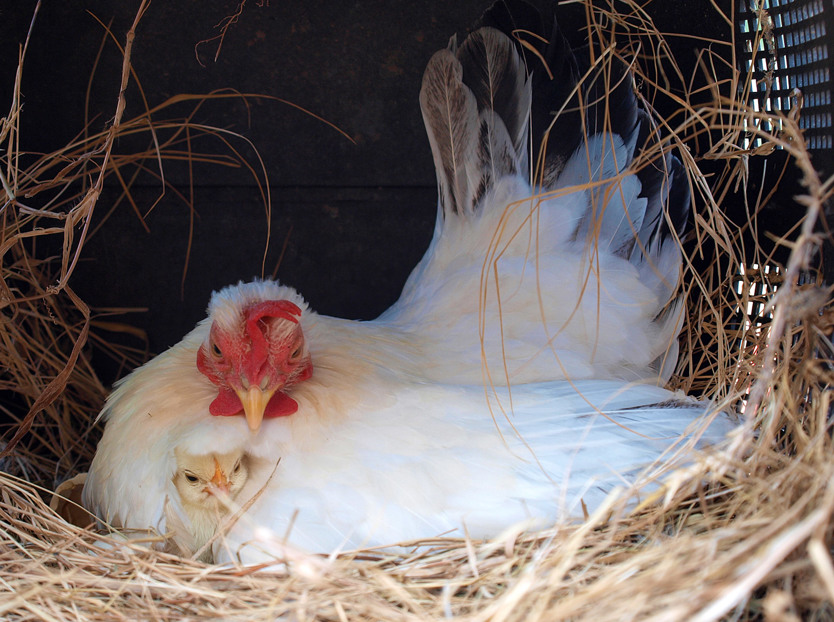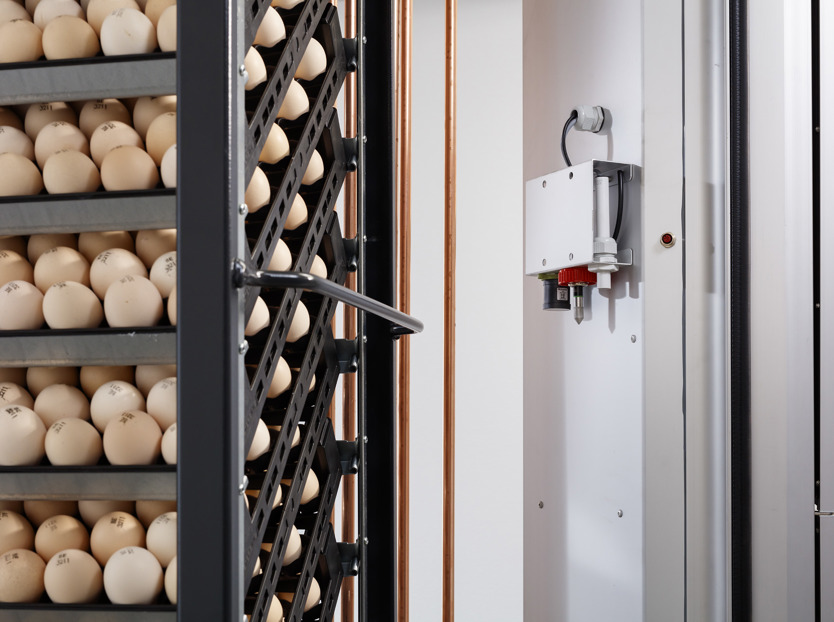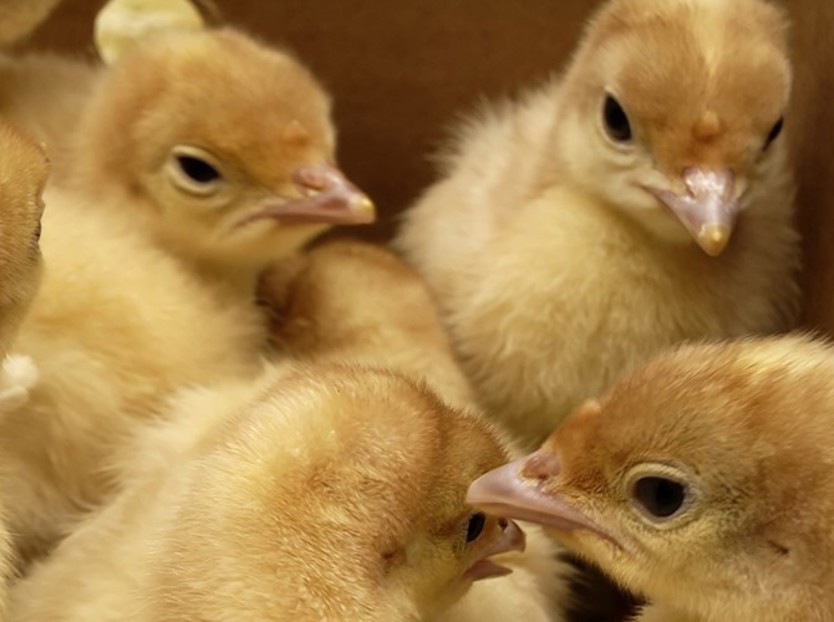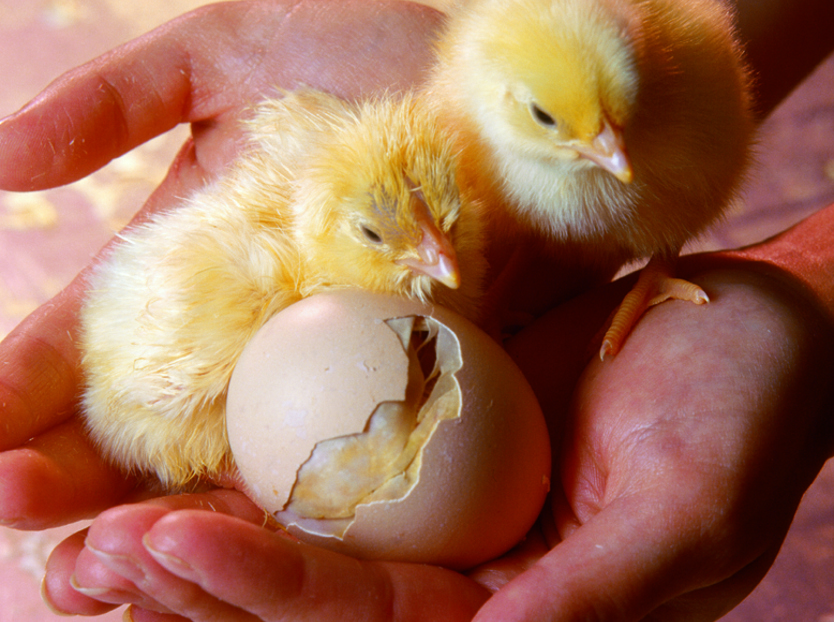Of all the parameters monitored throughout incubation, temperature is the primary one. When using the non-linear weight loss approach to incubate waterfowl eggs with cuticle, the right incubation temperature is even more critical. Once configured, the non-linear weight loss approach will lead hatcheries to the optimum Hatch of Fertile percentage while retaining the natural protection offered by the cuticle.
Waterfowl eggs differ physically from chicken eggs
Due to the increased degree of biological challenges experienced by the vulnerable embryo in its natural ‘wet’ environment, waterfowl eggs have a thicker ‘coating’ or cuticle compared to chicken eggs. This coating protects the eggs from contamination. In nature, the cuticle of waterfowl eggs gradually erodes during incubation due to the nest activity of the parent bird. This results in more exposed pores and, consequently, an increasing rate of gas exchange that provides the developing embryo with sufficient oxygen and creates an air cell big enough to facilitate hatching.
To replicate the interaction between parent bird and incubating waterfowl eggs, two approaches are traditionally used. Some hatcheries actively remove the cuticle by washing the eggs before incubation. Others spray the eggs with water during incubation. However, research into the specifics of waterfowl egg incubation has brought Petersime to an alternative approach that benefits the hatchery majorly.
Non-linear weight loss: nature as the benchmark
Petersime’s advanced single-stage incubation concept with tightly sealed cabinets and precise ventilation allows a natural evolution of the humidity levels. The concept is based on the principle of non-linear weight loss (NLWS), which imitates the humidity levels an embryo experiences when incubated naturally by the parent bird.
How does this work? Petersime’s single-stage incubator mimics the natural non-linear weight loss profile of waterfowl eggs. At the start of the incubation cycle, humidity levels are kept high to reduce weight loss. In a second phase, the levels are reduced in order to accelerate weight loss. By precisely providing O2 and removing CO2 and water in correlation with the developing embryo’s requirements, the incubator enables the egg pores to be exposed through just the right amount of limited erosion at the right rate. This generates the required gas exchange for good embryonic development and growth with the cuticle remaining intact.

Optimizing the temperature for waterfowl incubation
It is crucial that the rate of embryonic development and growth never exceeds the level of gas exchange achieved by the slow cuticle erosion. That is why an optimal incubation temperature profile is required. In the second half of the incubation cycle, it is extremely important that the shell temperature of eggs with cuticle is lower compared to what would be required for eggs without cuticle. Below figure illustrates how the eggshell temperature is to be perfectly managed during the final part of the development phase and throughout the entire growth phase to work in perfect conjunction with the changes in the humidity/gaseous pressure differential.

Alternative approach for optimum hatch results
The traditional methods of waterfowl incubation always bring a higher risk of contamination, possibly resulting in a negative impact on hatchery results. Washing waterfowl eggs in a chlorine solution prior to incubation removes the ‘barrier’ of the cuticle to increase the porosity of the eggs, eliminating their natural protection and exposing them to potential contamination. Alternatively, spraying the eggs with water during incubation promotes degradation of the cuticle and increases eggshell porosity as development proceeds, offering similar conditions to that of the non-linear weight loss approach. However, the constant use of water inside the incubator causes a build-up of corrosion and calcium and again heightens the risk of contamination. Moreover, the constant disruption of the temperature will generate an excessively wide hatch window and a broad range in duckling quality.
Once configured, the non-linear weight loss approach will lead to the optimum Hatch of Fertile percentage while retaining the natural protection offered by the cuticle, resulting in a reduced contamination risk and enhanced biosecurity. These are major benefits compared to the traditional cuticle removal methods. Of course, the non-linear weight loss approach requires good egg, incubator and hatchery management, but this is never an issue in modern, forward-thinking hatcheries. With Petersime’s non-linear weight loss approach, there is an impressive scope to reach optimum results in your waterfowl hatchery. Please don’t hesitate to contact us for more information.




